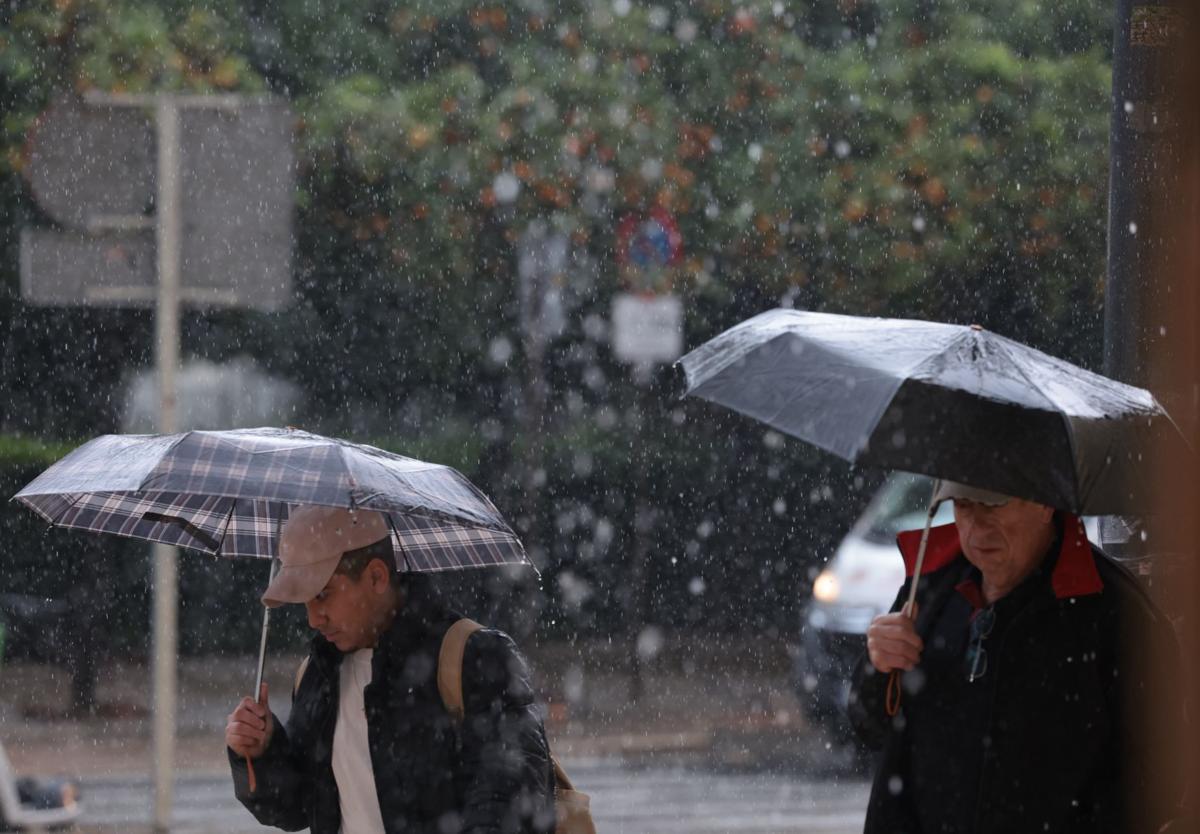This week's rain has a minimal effect on reservoir levels in Malaga province
The heaviest downpours fell near the coast, in places such as Malaga city, Rincón de la Victoria, Torremolinos and Alhaurín de la Torre
After two consecutive 'Dana' weather events that caused flooding in the province, an episode of steady rain - known locally in Malaga as ‘calaera’ - was a welcome relief. This type of rain falls intensely for hours without causing damage. It replenishes the aquifers and would have been perfect for bolstering reservoir supplies.
However, here’s the bad news: as correctly predicted by Spain's state weather agency Aemet, the heaviest rainfall was concentrated along the coastal strip and out at sea, barely reaching the areas where the main reservoirs in the province are located - those of the Guadalhorce system and La Viñuela in the Axarquía. That said, La Concepción, the reservoir closest to the coastal strip near Marbella, did manage to collect some runoff.
First of all, the rainfall recorded until the late hours of Thursday afternoon was significant. The storm remained static or moved slowly in the lower Guadalhorce area and the areas closest to Malaga city. Specifically, 55 mm were recorded in Rincón de la Victoria; 53 in La Cala del Moral; 51mm at Malaga Airport; 50 in Torremolinos and the same amount in Alhaurín de la Torre, according to the data from Aemet rain gauges, and the meteorology enthusiast networks Meteoclimatic and Wunderground, compiled by José Luis Escudero, the author of the SUR blog Tormentas y Rayos (storms and lightning).
For its part, the Junta de Andalucía's Hidrosur network provided the following data: 45.5mm in La Araña; 38 in the Paseo de la Farola in Malaga city (where its headquarters are located); 29 in Santón Pitar (Los Montes de Málaga) and the same figure at the Guadalhorce river as it passes through Cártama. Additionally, this is the river which has experienced the greatest increase, measured at the Aljaima weir, with a flow of 14.41 cubic metres per second. This is ten times the flow that the city needs for its daily water supply. The day's weather was rounded off with heavy snowfall in the Sierra de las Nieves and several lightning strikes along the coastal strip.
With this rainfall distribution, which has been concentrated in the lower levels, the only reservoir that is benefiting slightly has been La Concepción, which is the one closest to the sea and which supplies the western Costa del Sol. Once again, the water collected by the triple transfer from the diversion dams that supply it from the Guadaiza, Guadalmina and Guadalmansa rivers has been decisive, all of them at around 14-15mm. All in all, the gain has been minimal. Only La Viñuela reservoir in the Axarquía has received some slight runoff, while those of the Guadalhorce system (situated at a much higher latitude than the discharge point) have not noticed any improvement, and have even lost reserves due to the consumption of the last few hours.
Warnings for ice
In terms of incidents, there were few problems, although the rainfall was prolonged, it was not intense and therefore did not cause flooding. In Malaga city, the eastbound section of the Paseo de los Curas had to be cut off due to large pools of water. Meanwhile, at Malaga Airport there were some delays in operations during the morning, due to the presence of powerful storm nuclei at the seaward end of the two runways.
Meanwhile, in the Sierra de las Nieves, the authorities called for caution for those planning to visit the area to see the snow, which has fallen in abundance. Ice patches have formed along the way, which could lead to accidents. The white blanket of snow is at very high altitudes, above 1,500 metres, and it is mandatory to proceed on foot from the parking area.

